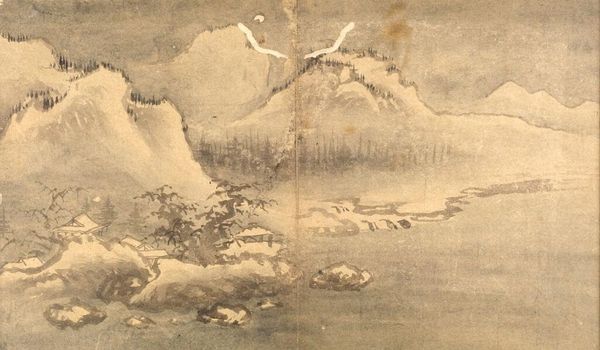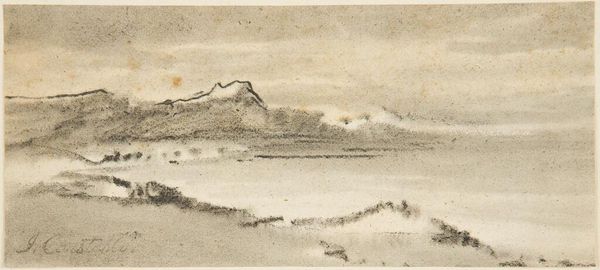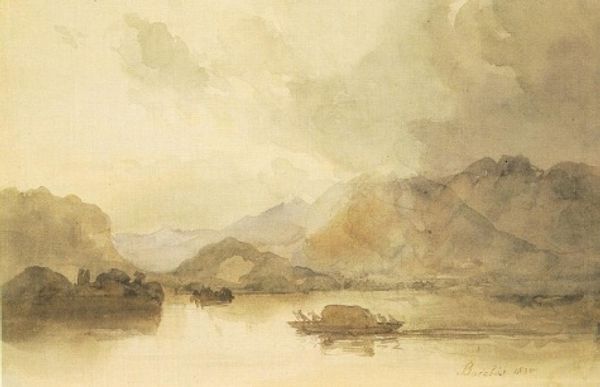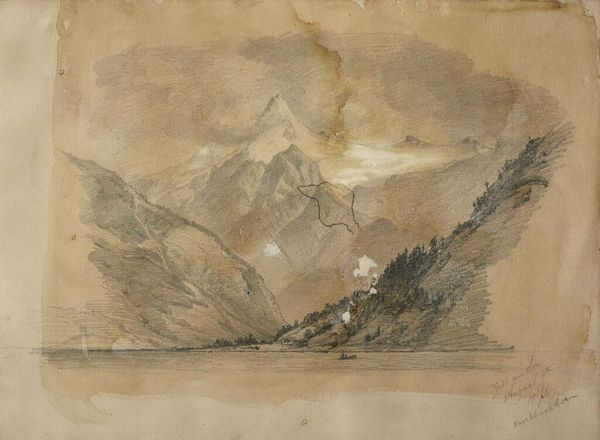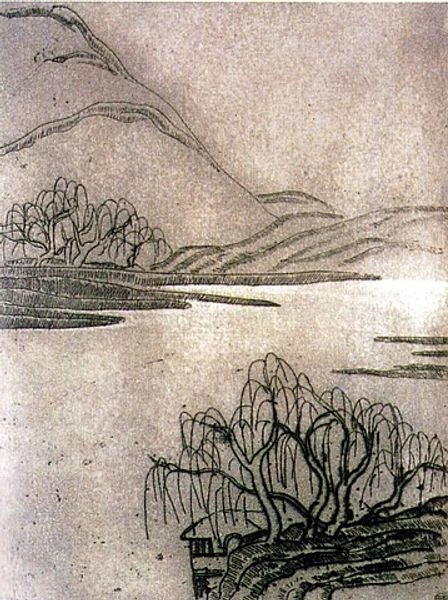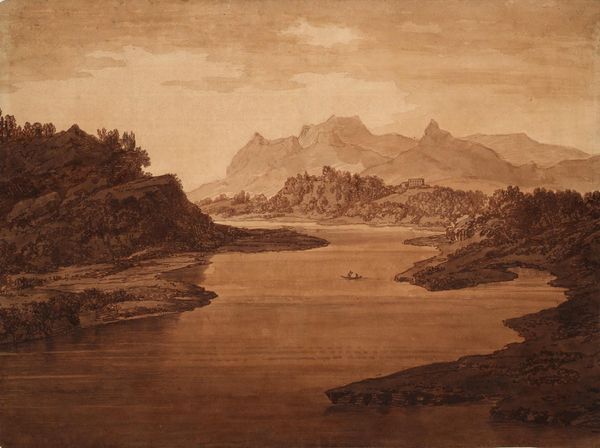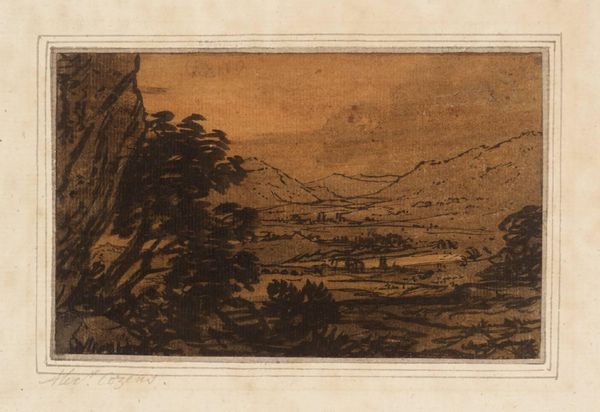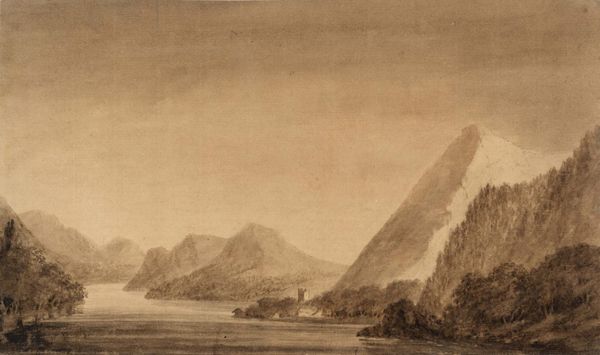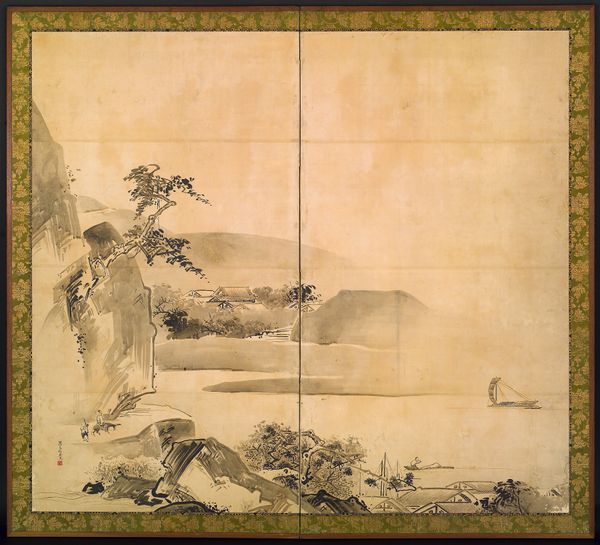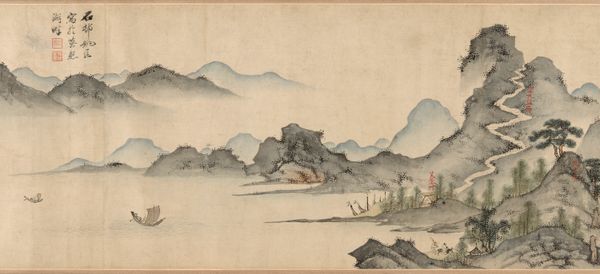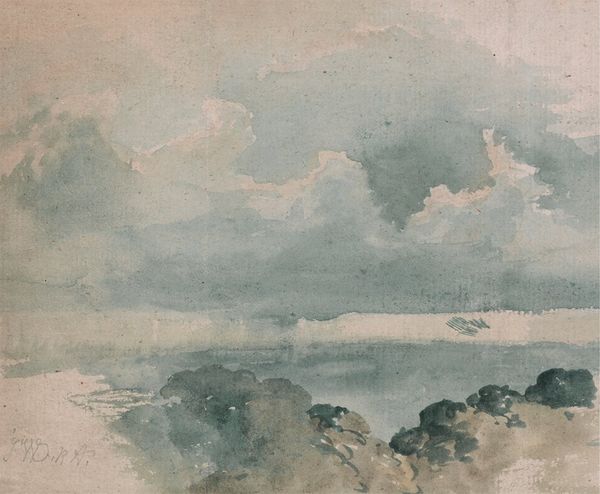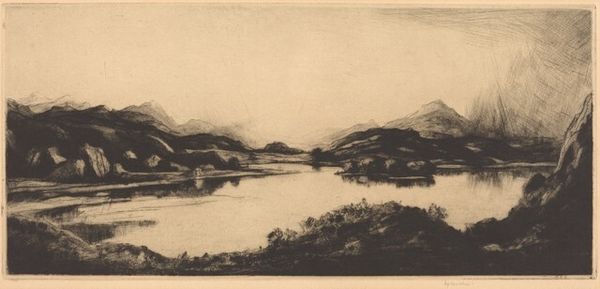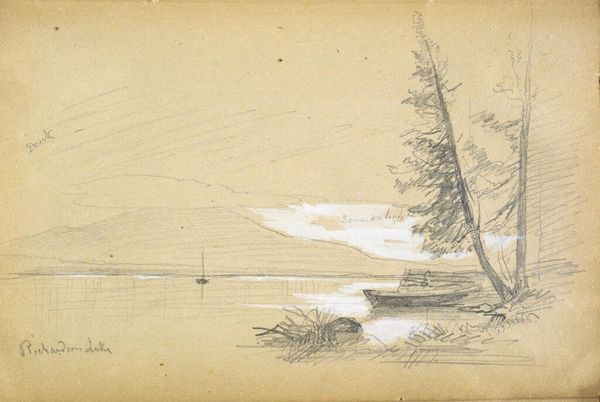
Copyright: Public domain
Editor: This is "Mountainous River Landscape" by Caspar David Friedrich, created around 1830. It looks like it's rendered with tempera, and it just exudes a certain… stillness. It almost feels like a memory fading into sepia tones. What draws your eye when you look at this piece? Curator: The stillness is exactly what grabs me, too. It's more than just quiet, isn't it? It’s an echo of a moment held precious, or maybe a landscape reflecting on its own impermanence. And look at that little boat—such a fragile human presence in something so vast and timeless! Makes you wonder if they're seeking something, or just lost in the immensity. What do *you* think they’re doing out there? Editor: Maybe they are searching for… tranquility? I mean, if I were floating there, I would feel wonderfully insignificant. Is it just me, or does it also evoke a sense of German Romanticism? Curator: Oh, absolutely! That deep dive into emotion and the sublime, the idea that nature holds something beyond what we can physically grasp—that’s Friedrich through and through. He's almost giving the landscape a soul, something the boat is interacting with, as it rows further toward that hazy moon. Do you notice how the river almost acts as a mirror, blurring the boundary between earth and sky? Editor: Yeah, now that you mention it, it definitely does blur the lines. So, is he suggesting a harmony between the physical and spiritual realms? Curator: I think that is at least one door to enter. For Friedrich, and so many Romantics, the external world *was* a mirror of inner experience, wasn’t it? And perhaps what Friedrich offers *us* is the potential to experience awe where perhaps, otherwise, we may not think to look. Editor: I've never thought of landscape art quite that way. Thank you! Curator: And thank you! Every gaze brings its own landscape to life, don't you think?
Comments
No comments
Be the first to comment and join the conversation on the ultimate creative platform.
